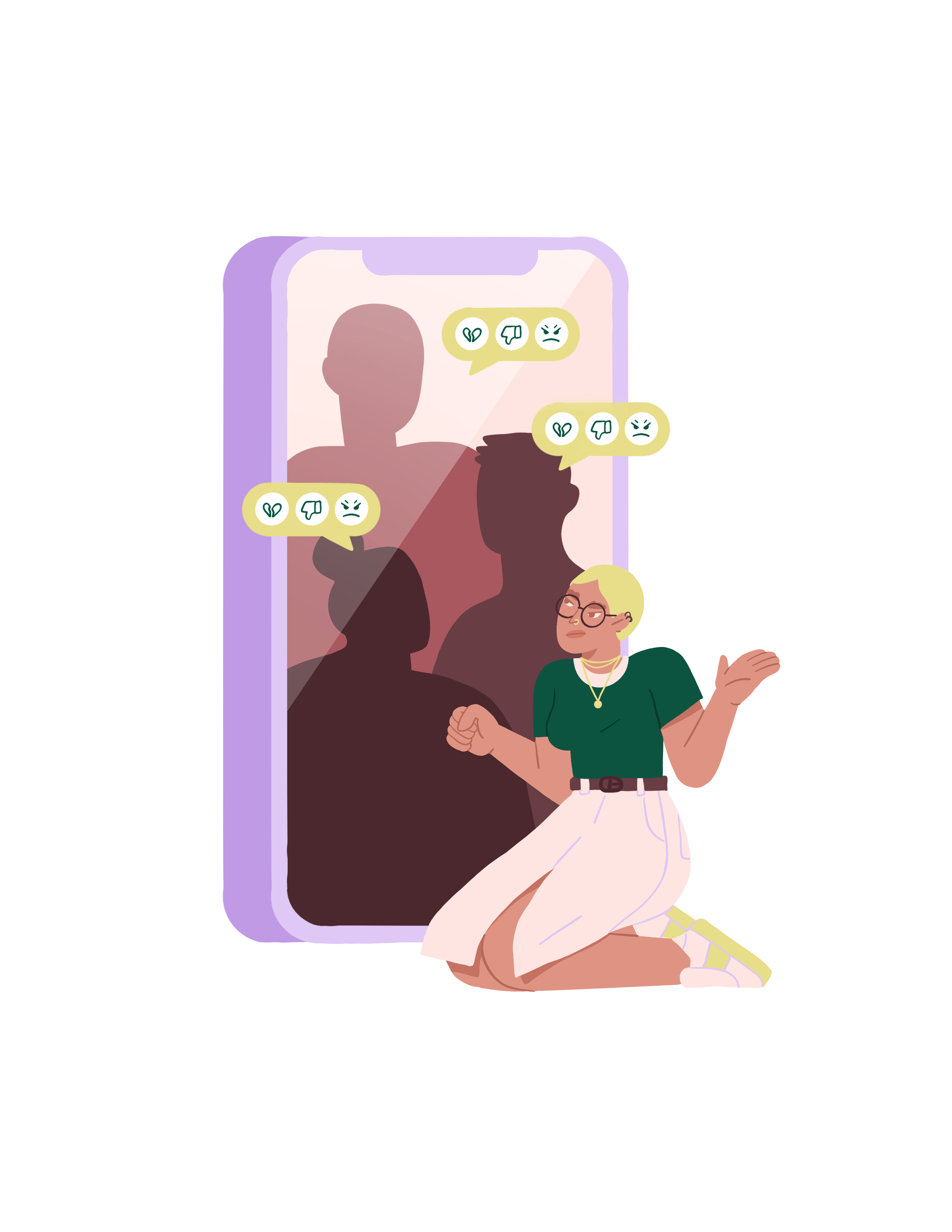Online violence against women is not an isolated phenomenon; it responds to a broader social context of inequality and discrimination against women and girls. To talk about digital gender violence, it is necessary to understand it as an extension of gender violence that has historically affected women, girls, and gender-diverse people in all spheres of their lives.
That is, digital violence against women is not disconnected from violence in the physical sphere, and there is no one more serious or less serious than the other. Violence is systematic, and digital platforms reproduce and amplify it while new forms of violence emerge that move between the digital and the “real” world.
The Guide to Basics, Digital Security Tools and Response Strategies of the Organization of American States concludes that “Women and girls experience gender violence over the years in all spaces.” offline and online where they attend and participate, whether at home, school, work, public roads, politics, the media, sports, public institutions or when browsing social networks.”
So, digital gender violence is a concept that has been constantly evolving since the origins of the Internet and will surely continue to transform and deepen as technological tools continue to advance and become more and more part of our daily lives, for example, with artificial intelligence.
For this document, we adopt the concept of Special Rapporteur on Violence against Women of the United Nations, which in 2018 defined it as “any act of gender-based violence against women committed, assisted, in part or in whole, by the use of ICT, or aggravated by it, such as mobile phones and telephones, smart devices, the Internet, social media platforms, or email is directed against a woman because she is a woman, or that affects her disproportionately.”
Types of digital gender violence
Faced with the lack of consensus on defining the different types of online violence and its manifestations, the Organization of American States’ Guide proposes the following descriptive guide to conducting attacks online or facilitated by these technologies. We complement it with the proposal of the Mexican NGO Fighters.
- Creation, dissemination, distribution, or digital exchange of photographs, videos, or audio clips of a sexual or intimate nature without consent. Includes recording and distributing images of sexual abuse; taking, without consent, photographs or videos of women’s intimate body parts in public spaces and sharing them online; and creating sexualized images, edited with photomontage or deepfake videos.
- Unauthorized access, control, manipulation, exchange, or publication of private information and personal data. It includes the dissemination of private information (doxing) and the exposure of gender identity or sexual orientation that generates risk (outing).
- Impersonation and identity theft. This includes creating false profiles or accounts on social networks or usurping email accounts or telephone numbers that can be used to contact the victim’s friends, family, or acquaintances.
- Acts that damage a person’s reputation or credibility, both in their family and professional life.
- Surveillance, stalking, and monitoring. It can occur online through spyware installed on the victim’s cell phone to clandestinely monitor them or steal their information or offline with geolocation devices, surveillance cameras, or virtual assistants.
- Harassment and cyberstalking. Obsessively spying on the person, constantly sending friend requests on social networks, joining all the online groups the person is a part of, calling and sending repeated emails and text messages. It may be a single incident or a repetitive pattern of harassment, and the bully may be a person or an organized group.
- Cyberbullying. Minors use technology to humiliate, annoy, alarm, insult, or attack another minor.
- Threats of physical or sexual violence directed towards the person, their loved ones, or their property. It includes digital extortion to force the victim to act in a certain way to bend their will or control them emotionally.
- Physical violence is facilitated by technology. It may include organized or planned sexual attacks through social media or dating apps.
- Abuse, exploitation, and/or trafficking of women and girls through technologies. The so-called grooming consists of the intention of an adult to approach a minor for sexual purposes.
- Attacks on women’s groups, organizations or communities. In Latin America, multiple attacks have targeted the websites, profiles, or accounts of feminist groups or defenders of women’s human rights to block or censor their content.
- Omissions by actors with regulatory power. Lack of interest, knowledge, action, or contempt on the part of authorities, Internet intermediaries, institutions, or communications that can regulate, solve, or sanction online violence.

